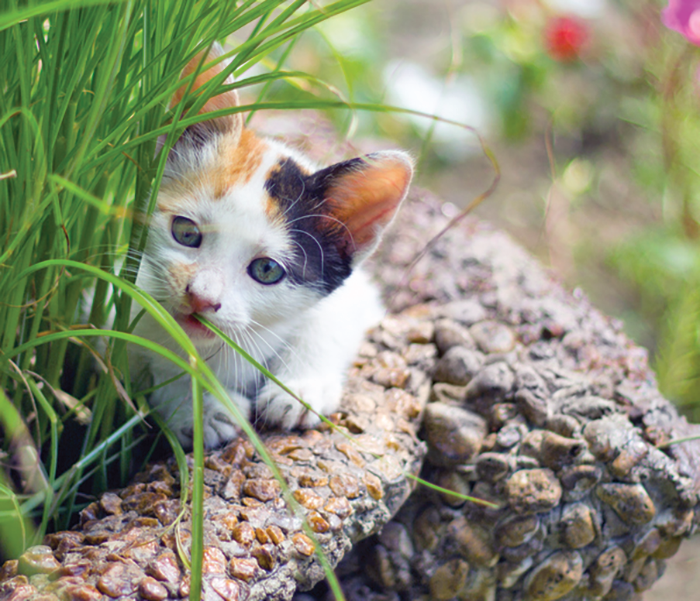Q. I would appreciate your thoughts on our female 12-year old tuxedo kitty, who has had a neurological problem since kittenhood.
It’s not severe like getting heavy-duty seizures or epilepsy, but she’s always had mild head tremors every now and then. Recently, she tends to tilt her head to the left when she’s eating or circles to her left when approaching her food bowl.
Can you provide us with any information that would shed some light on what is causing this strange behavior? Our veterinarian says that she otherwise checks out as being completely healthy.
A. Thanks for getting in touch, and I completely understand your concern regarding your kitty’s tremors. The first point to make is that it is important that you work with your veterinarian, and perhaps a veterinary neurologist, to assure appropriate diagnostic and therapeutic (if required) care for her.
Tremors are characterized by rhythmic, involuntary muscle movement that causes shakiness in a part of the body. They may affect only one part of the body, such as the head or the limbs, or may be generalized, and they disappear when the patient is sleeping. Shakiness that does not stop when a patient is sleeping are not characterized as true tremors.
Tremors that worsen when a cat is trying to perform a specific task (i.e., eating, reaching out for something) or another purposeful movement are called intention tremors, and these are most commonly associated with disease in a part of the brain called the cerebellum. The cerebellum functions to coordinate the timing and force of contraction of muscle groups to facilitate fluid movement of the limbs and body.
The most common cause of the types of tremors that you seem to be describing is a condition called cerebellar hypoplasia (CH). This is caused by abnormal in utero development of the cerebellum in cats when the queen is infected with feline panleukopenia virus during pregnancy. During such an infection, all kittens in a litter may be affected with CH, or just some of the kittens in a litter.
There are other potential causes of CH in kittens, including extreme starvation of the queen during pregnancy, trauma to the brain of a neonatal kitten, toxoplasmosis, and some other inflammatory diseases, but panleukopenia infection is by far the most common cause.
While observing these tremors can be disconcerting to owners, in many, if not most, cases, affected cats are otherwise healthy and can live long, fruitful lives, and they do not require any specific therapy. They are not generally infectious for other cats, are not believed to experience any pain as a result of CH, and in many cases, they adapt very well to their unique way of getting around and doing things.
Owners of cats with CH may have to modify their environments to prevent falls or things falling on them, and in some cases, providing elevated food and water bowls can make things easier for these cats, but otherwise they can be quite healthy and happy.
Please be sure to consult with your veterinarian if you have any additional concerns, if the symptoms worsen/change, or if you have any further questions, but I am happy to say that cats with CH can be very unique, special, and fun feline friends for those that are lucky enough to love them!
Feline Panleukopenia
Due to a modern effective vaccine, feline panleukopenia is no longer a leading cause of death in cats. Also called “feline distemper” or “feline parvo,” it is not the same virus that causes canine distemper and parvo.
Feline panleukopenia is highly contagious and spreads through the cat’s urine, feces, and nasal secretions. Cats can become infected by old secretions left behind by an ill feline. The virus can survive for long periods in the environment as it is difficult to kill. Once inside its victim, the virus infects developing cells, such as in bone marrow, the intestines, and developing fetuses.
Signs of an infection include inappetence, lethargy, nasal discharge, vomiting, and diarrhea. Young kittens rarely survive and may suffer brain and eye damage. No medications are effective against the virus. The only treatment is supportive care.




